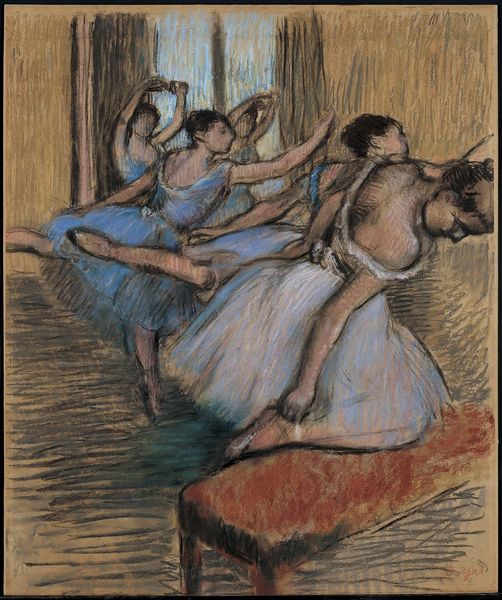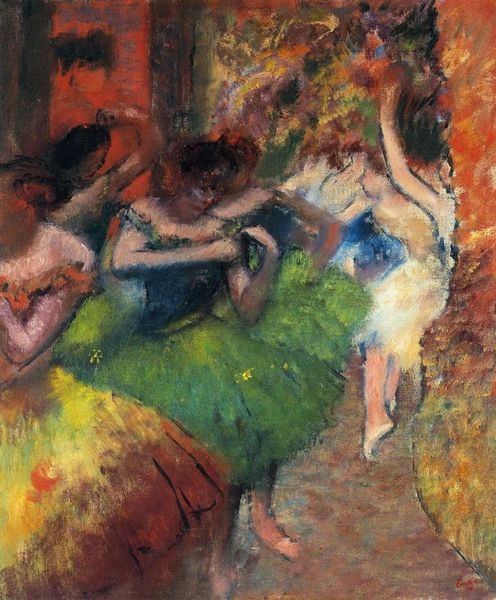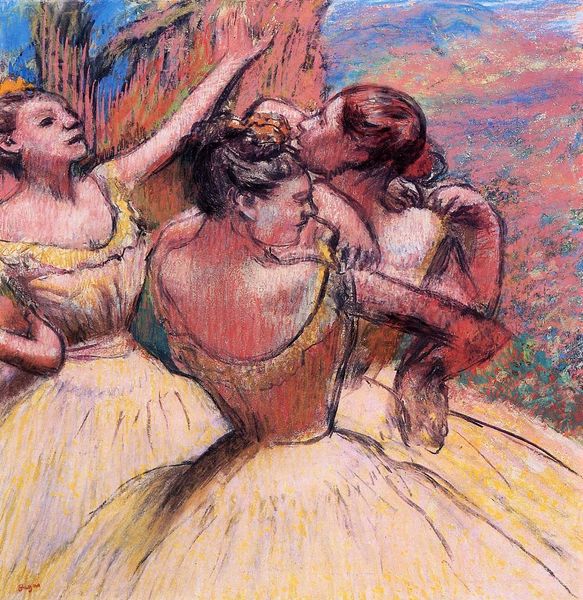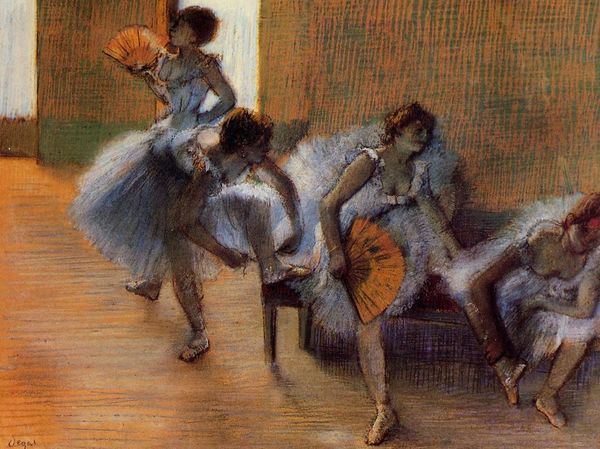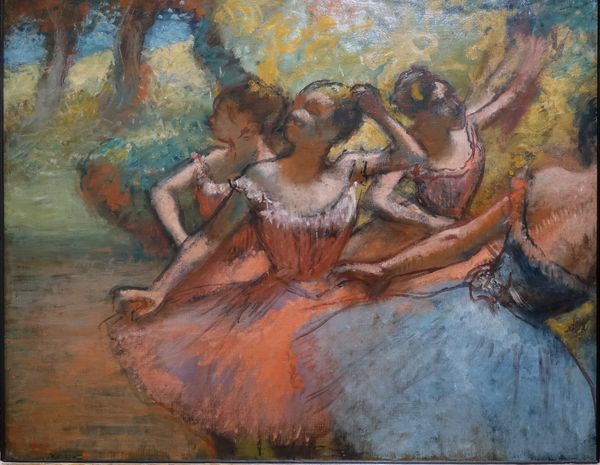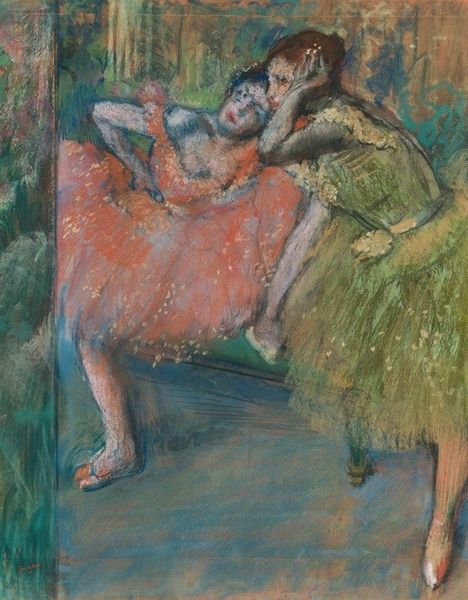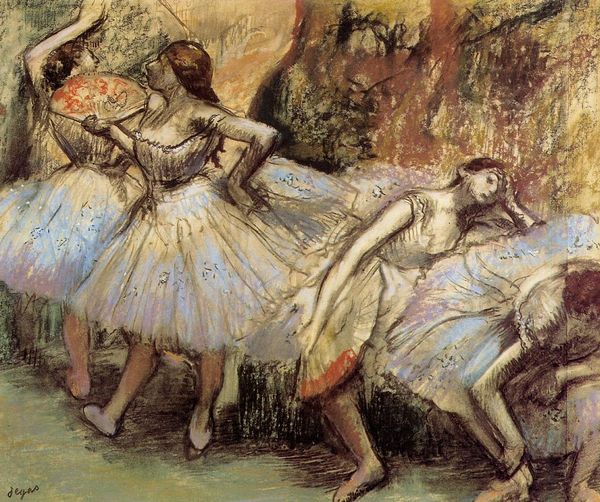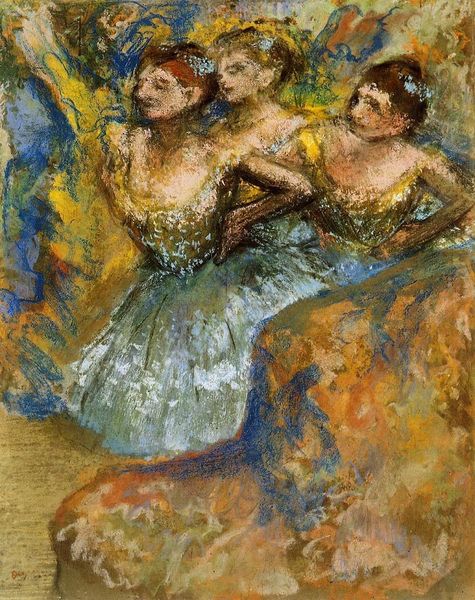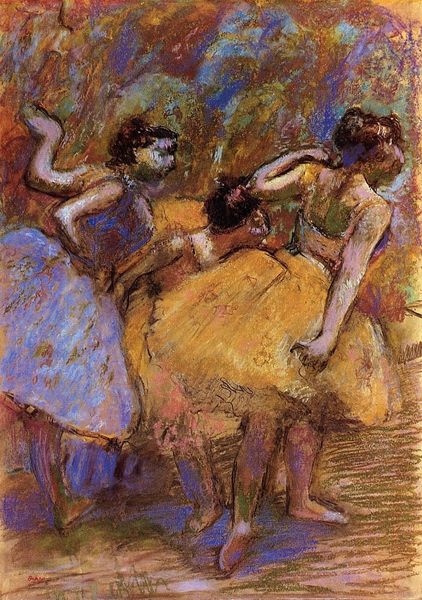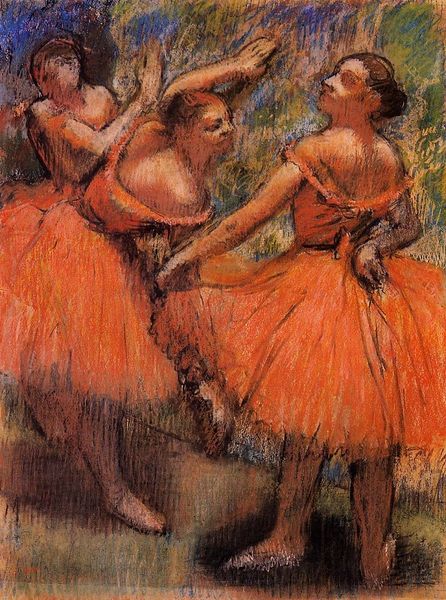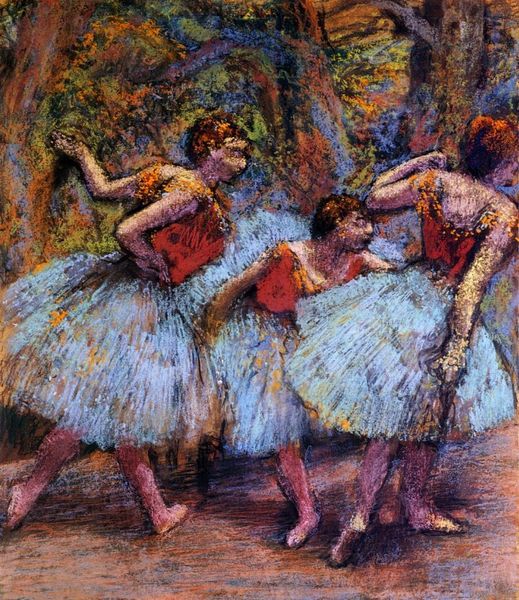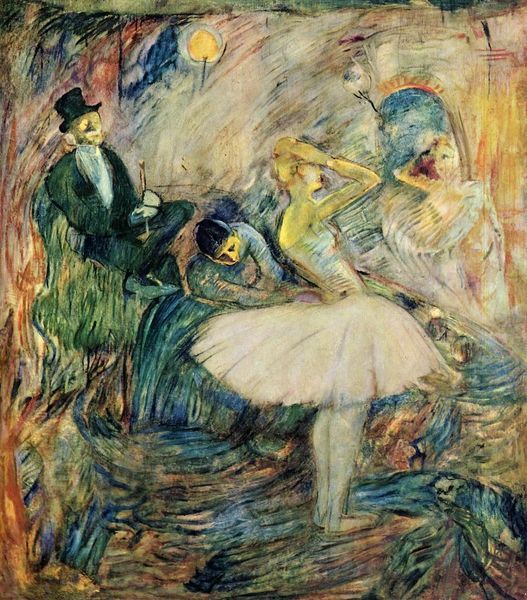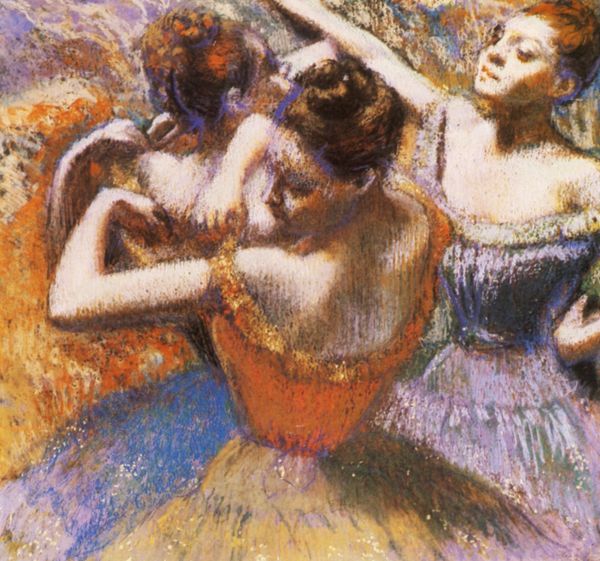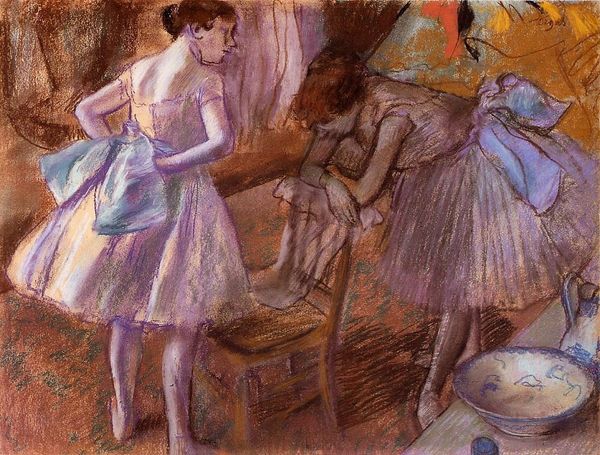
Copyright: Public domain
Edgar Degas made Dancers in the Wings using pastel on paper. Look closely, and you'll notice the visible strokes of the pastel sticks. Unlike oil paint, which can be blended to create seamless surfaces, pastel retains a sense of immediacy. Degas uses this quality to great effect, capturing the fleeting movements and gestures of the dancers as they prepare to go on stage. The texture of the paper also plays a crucial role. The tooth, or roughness, of the surface allows the pastel to adhere, creating a vibrant, almost luminous effect. Degas's choice of pastel as a medium connects the artwork to the wider social issues of labour, politics, and consumption. Pastel sticks were relatively inexpensive and easy to transport, making them a popular choice for artists working outside the traditional studio setting. In understanding this artwork, the materials and making processes are key, breaking down conventional barriers between fine art and craft.
Comments
No comments
Be the first to comment and join the conversation on the ultimate creative platform.
